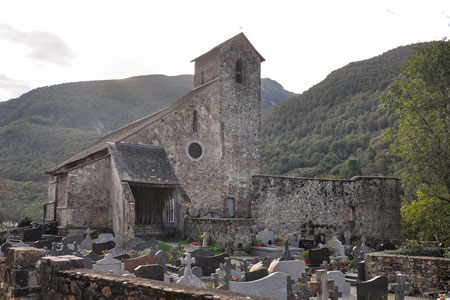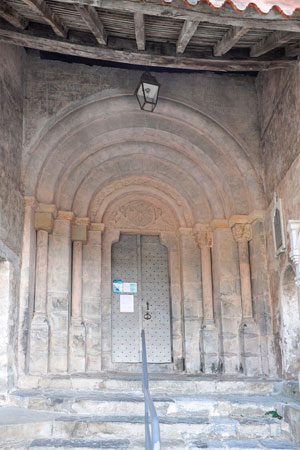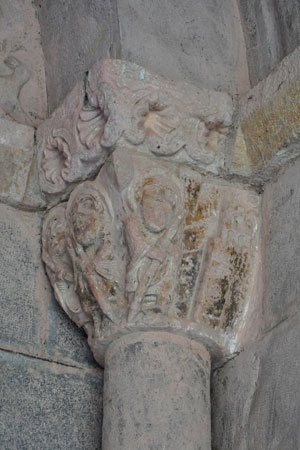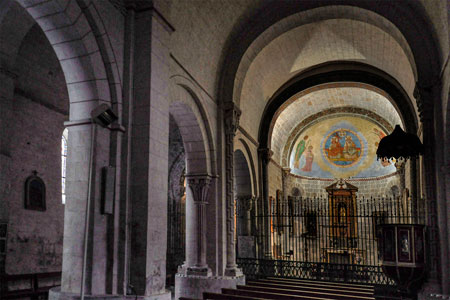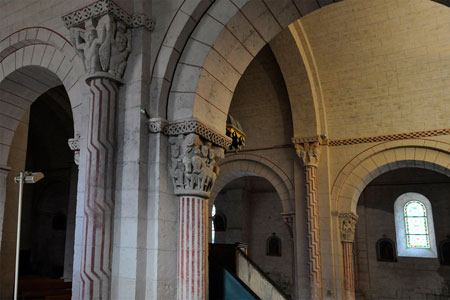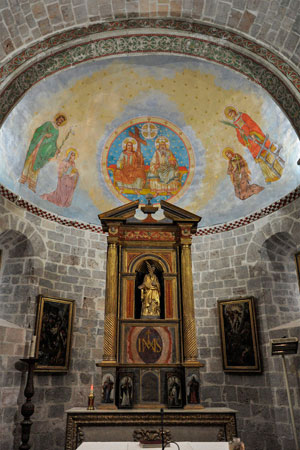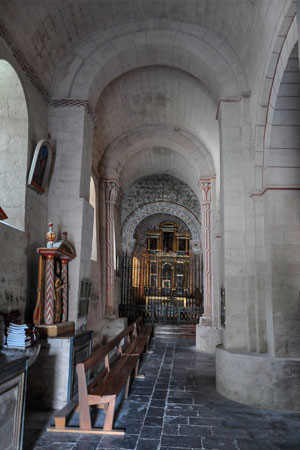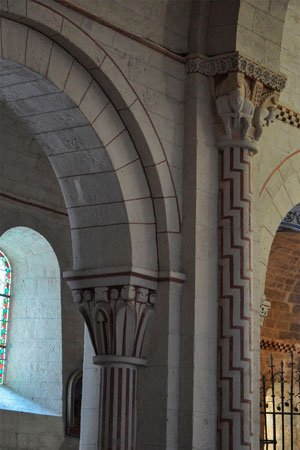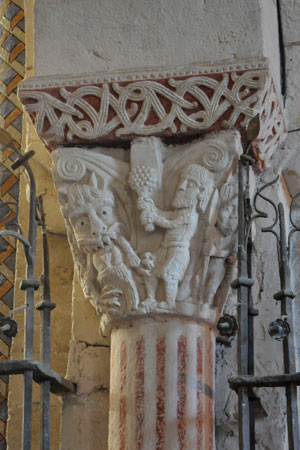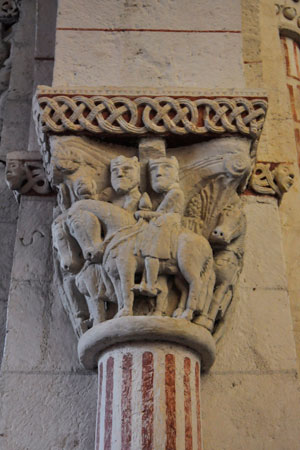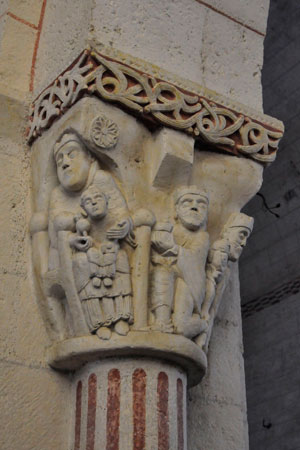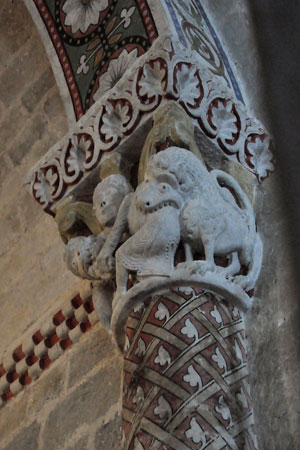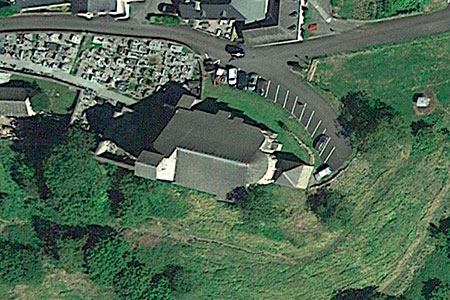Canonry of Sainte-Engrâce du Port
Monastère de Sainte-Engrâce / Sainte-Engrâce en Soule / Urdatx / Santa Grazi / S. Gracia
(Sainte-Engrace, Pyrénées-Atlantiques)
The municipality of Sainte-Engrâce (Urdatx) is located in the territory of Soule (Zuberoa), in the French Basque Country, on a route through the Pyrenees to Navarre. The village developed around the church of Sainte-Engrâce, dedicated to this martyr venerated in Zaragoza. According to legend, thieves stole an arm of the saint and hid it here, near a church, where it was later discovered by a bull. After unsuccessful attempts to move the relic, it was deposited in the church, where it was venerated.
The history of this monastery is little known due to a lack of documentation. The church took the name of Sainte-Engrâce du Port and was run by a community of regular canons who also administered a hospital for pilgrims. It is also worth mentioning that in 1085, the King of Aragon, Sancho Ramírez (1043-1094), donated this house to the Benedictine monastery of San Salvador de Leyre (Navarre), a cession that was confirmed by Pope Paschal II in 1100. However, it is suspected that it could be a forgery made by Leyre (Benedictine monastery) to influence Sainte-Engrâce (Augustinian canonry).
From then on, Sainte-Engrâce maintained its independence, although it had to pay an annual rent to Leyre. Disputes between the two houses continued until the 18th century. During the 14th century, the community of canons regular became a secular collegiate church. During this period, Sainte-Engrâce suffered from the social instability of the region and, in 1569, a Calvinist attack led to the loss of furniture, archives and, above all, the arm of Saint Engratia, which affected the flow of pilgrims.
The collegiate church was able to recover from the shock and obtained another relic of the titular saint, while the canons were replaced by clerics. In 1724, the collegiate church was suppressed and the church was joined to the seminary of Oloron. With the Revolution, the church lost its movable heritage, especially its gold and silverware, and the goods that belonged to it. Subsequently, the church was protected as a historical monument. This Romanesque structure, restored in the 18th and 19th centuries, has three naves and three apses, without a transept. The remarkable series of capitals that decorate it and the restored portal are remarkable.

Illustration from Epítome, o compendio de las antiguedades del subterraneo... (1745)
Biblioteca Nacional de España
According to tradition, Engratia was born in Braga, although other sources consider her to be a daughter of Zaragoza. In the year 303, on a trip to Gaul, where she was to marry the Marquis of Roselló, passing through Zaragoza in the midst of the persecution against Christians, she and her entourage of eighteen companions confronted the governor of the city defending their beliefs. Engratia was martyred and died in prison, her companions were decapitated. To prevent the remains of the martyrs from being venerated, their bodies were burned, together with the remains of criminals taken from prison, but, miraculously, the ashes separated, forming a white mass (Santas Masas), distinct from non-Christians. Engratia's remains were buried in a necropolis outside the city walls and soon the burial place became a centre of devotion.
- COTTINEAU, Laurent-Henri (1939). Répertoire topo-bibliographique des abbayes et prieurés. Vol. 2. Mâcon: Protat
- DURAND, Hippolyte (1865). Notice historique et archéologique sur le monastère et l'église de Sainte-Engrace-du-Port. Mémoires lus à la Sorbonne 1864
- DURLIAT, Marcel (1969). Pyrénées romanes. La-Pierre-qui-Vire: Zodiaque
- ETCHEVERRY, Michel (1946). Entre religieux français et espagnols. Bulletin Hispanique, vol. 48-1
- GUÉRIN, Paul (1888). Les Petits Bollandistes. Vies des saints. Vol. 4. París: Bloud et Barral
- HARISTOY, Pierre (1893). Monographie de l'antique Abbaye de Sainte-Engrace. Baiona: Lasserre
- RICHTER, Général (1935). Les chapiteaux de Saint-Engrâce. Société des Sciences, Lettres & Arts de Bayonne, núm. 16


